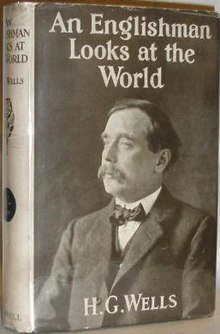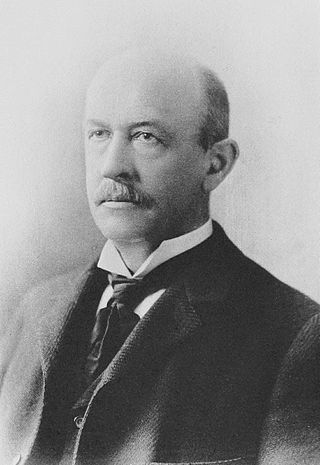
William Graham Sumner was an American clergyman, social scientist, and neoclassical liberal. He taught social sciences at Yale University, where he held the nation's first professorship in sociology and became one of the most influential teachers at any other major school.

The Outline of History, subtitled either "The Whole Story of Man" or "Being a Plain History of Life and Mankind", is a work by H. G. Wells chronicling the history of the world from the origin of the Earth to the First World War. It appeared in an illustrated version of 24 fortnightly instalments beginning on 22 November 1919 and was published as a single volume in 1920. It sold more than two million copies, was translated into many languages, and had a considerable impact on the teaching of history in institutions of higher education. Wells modelled the Outline on the Encyclopédie of Denis Diderot.
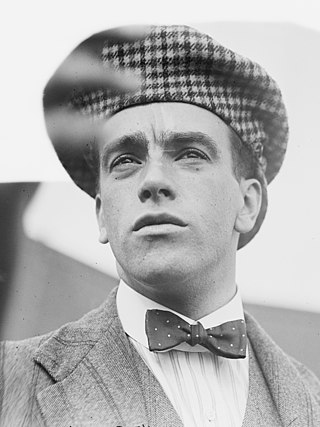
Claude Grahame-White was an English pioneer of aviation, and the first to make a night flight, during the Daily Mail-sponsored 1910 London to Manchester air race.
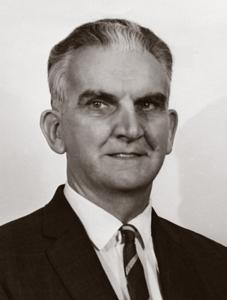
Kenneth Ewart Boulding was an English-born American economist, educator, peace activist, and interdisciplinary philosopher. Boulding was the author of two citation classics: The Image: Knowledge in Life and Society (1956) and Conflict and Defense: A General Theory (1962). He was co-founder of general systems theory and founder of numerous ongoing intellectual projects in economics and social science. He was married to sociologist Elise M. Boulding.

A Modern Utopia is a 1905 novel by H. G. Wells.
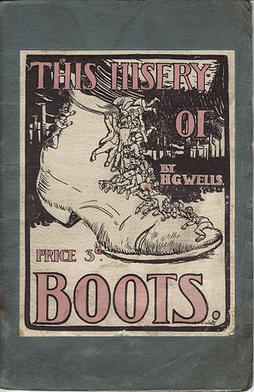
This Misery of Boots is a 1907 political tract by H. G. Wells advocating socialism. Published by the Fabian Society, This Misery of Boots is the expansion of a 1905 essay with the same name. Its five chapters condemn private property in land and means of production and calls for their expropriation by the state "not for profit, but for service."

The War of the Worlds is a science fiction novel by English author H. G. Wells. It was written between 1895 and 1897, and serialised in Pearson's Magazine in the UK and Cosmopolitan magazine in the US in 1897. The full novel was first published in hardcover in 1898 by William Heinemann. The War of the Worlds is one of the earliest stories to detail a conflict between humankind and an extraterrestrial race. The novel is the first-person narrative of an unnamed protagonist in Surrey and his younger brother in London as southern England is invaded by Martians. It is one of the most commented-on works in the science fiction canon.

The World of William Clissold is a 1926 novel by H. G. Wells published initially in three volumes. The first volume was published in September to coincide with Wells's sixtieth birthday, and the second and third volumes followed at monthly intervals.

The Story of a Great Schoolmaster is a 1924 biography of Frederick William Sanderson (1857–1922) by H. G. Wells. It is the only biography Wells wrote. Sanderson was a personal friend, having met Wells in 1914 when his sons George Philip ('Gip'), born in 1901, and Frank Richard, born in 1903, became pupils at Oundle School, of which Sanderson was headmaster from 1892 to 1922. After Sanderson died, while giving a lecture at University College London, at which he was introduced by Wells, the famous author agreed to help produce a biography to raise money for the school. But in December 1922, after disagreements emerged with Sanderson's widow about his approach to the subject, Wells withdrew from the official biography and published his own work separately.

Select Conversations with an Uncle, published in 1895, was H. G. Wells's first literary publication in book form. It consists of reports of twelve conversations between a fictional witty uncle who has returned to London from South Africa with "a certain affluence," as well as two other conversations.
The Future in America: A Search After Realities is a 1906 travel essay by H. G. Wells recounting his impressions from the first of half a dozen visits he would make to the United States. The book consists of fifteen chapters and a concluding "envoy".
The Discovery of the Future is a 1902 philosophical lecture by H. G. Wells that argues for the knowability of the future. It was originally delivered to the Royal Institution on January 24, 1902. Before appearing in book form, it was published by Richard Gregory in Nature on February 6, 1902, and was also published as part of the Annual Report of the Smithsonian Institution. Available online.

The Passionate Friends is a 1913 coming of age novel by H. G. Wells detailing the life and travels of a young man. It is notable as the first introduction of Wells's notion of an "open conspiracy" of individuals to achieve a world state.
The Wife of Sir Isaac Harman is a 1914 novel by H. G. Wells.

Bealby: A Holiday is a 1915 comic novel by H. G. Wells.

A Year of Prophesying collects 55 newspaper columns written by H. G. Wells in 1923 and 1924.

The Work, Wealth and Happiness of Mankind by H. G. Wells is the final work of a trilogy of which the first volumes were The Outline of History (1919–1920) and The Science of Life (1929). Wells conceived of the three parts of his trilogy as, respectively, "a survey of history, of the science of life, and of existing conditions." Intended as an unprecedented "picture of all mankind to-day" in all its manifold activities, he called it "the least finished work . . . because it is the most novel." He hoped the volumes would play a role in the open conspiracy to establish a progressive world government that he had been promoting since the mid-1920s.
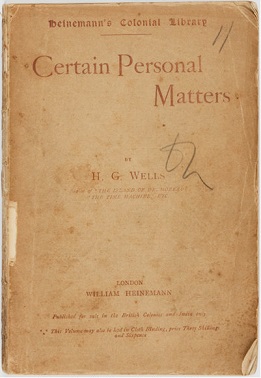
Certain Personal Matters is an 1897 collection of essays selected by H. G. Wells from among the many short essays and ephemeral pieces he had written since 1893. The book consists of thirty-nine pieces ranging from about eight hundred to two thousand words in length. A one-shilling reprint was issued in 1901 by T. Fisher Unwin.

Anticipations of the Reaction of Mechanical and Scientific Progress upon Human Life and Thought, generally known as Anticipations, was written by H.G. Wells at the age of 34. He later called the book, which became a bestseller, "the keystone to the main arch of my work." His most recent biographer, however, calls the volume "both the starting point and the lowest point in Wells's career as a social thinker."
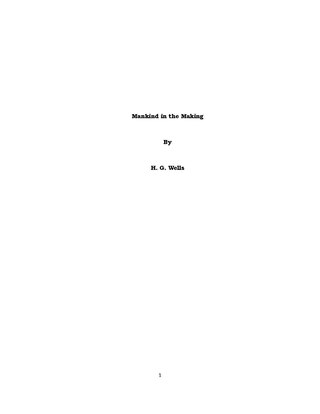
Mankind in the Making (1903) is H.G. Wells's sequel to Anticipations (1901). Mankind in the Making analyzes the "process" of "man's making," i.e. "the great complex of circumstances which mould the vague possibilities of the average child into the reality of the citizen of the modern state." Taking an aggressive tone in criticizing many aspects of contemporary institutions, Wells proposed a doctrine he called "New Republicanism," which "tests all things by their effect upon the evolution of man."
